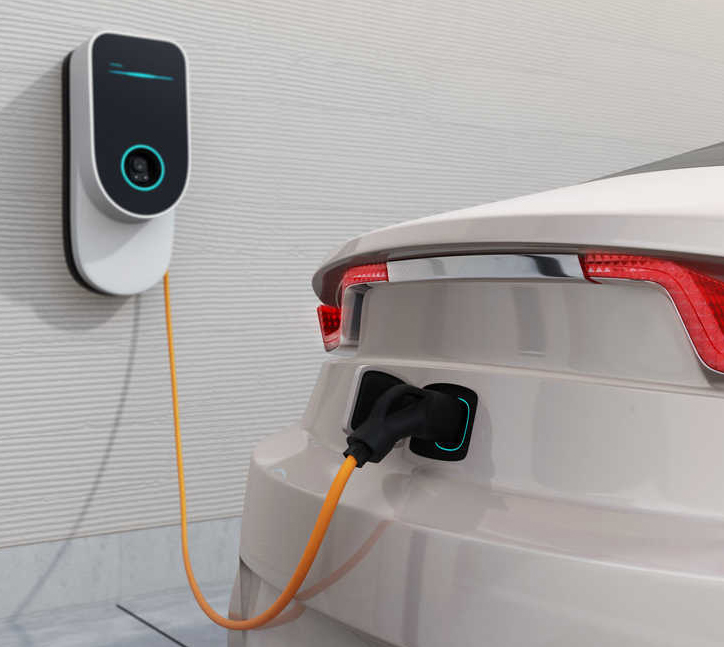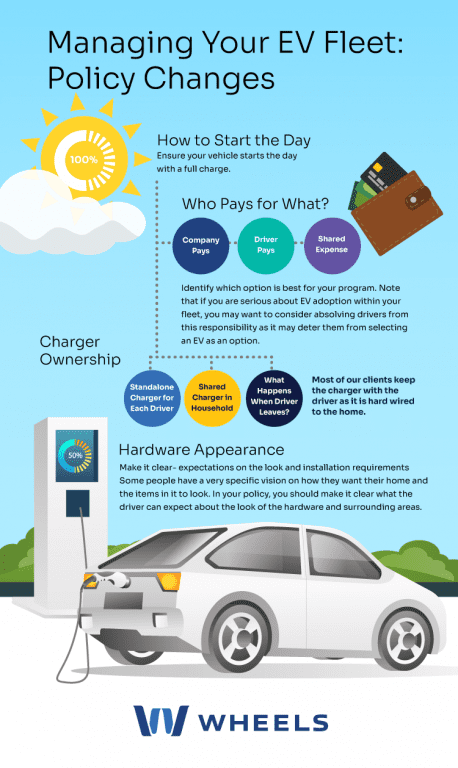Blog Post
Managing your EV Fleet: Home-Charging
By Suzanne Sabharwal
September 5, 2023
Electric vehicles are an important part of the future state of mobility. But the journey to run a more environmentally sustainable fleet isn’t always easy. There are new technologies, new behaviors, and new strategies to learn. While there are several stakeholders involved and important decisions to make, what to add to your policy and how to educate your drivers are common questions we receive from managers.
Here we will focus on Home Charging – what you should be thinking about in terms of policy changes and how you should be educating yourself to answer operator questions. Outlined below is a collection of recommendations that I, and my fleet consulting colleagues, have been discussing with our clients.

Policy Recommendations
- How to Start the Day. At-home-charging is one of the most affordable and convenient ways to charge an EV. You should work to ensure your EV work force starts their day vehicle with a fully charged vehicle before hitting the road. Make sure that expectation is outlined clearly within your policy to achieve maximum range.
- Payment of charger and installation. Will this come out of the fleet budget? Will your company take on this expense or are you expecting drivers to handle? Note that if you are serious about EV adoption within your fleet, you may want to consider absolving drivers from this responsibility as it may deter them from selecting an EV as an option. We have found that best practice is to provide financial support for the charger, installation, and ongoing electricity usage.
- Charger Ownership. If there are multiple EVs in a household, you will need to address whether the driver needs to have a standalone dedicated charger or if a shared charger is an option. In addition, if a driver leaves the organization, you’ll need to decide what happens to the charger. Most of our clients keep the charger with the driver as it is hard wired to the home.
- Hardware appearance. Some people have a very specific vision on how they want their home and the items in it to look. In your policy, you should make it clear what the driver can expect about the look of the hardware and surrounding areas. Wiring and conduits may be visible, and the charger may be installed in a location that isn’t where the homeowner prefers yet is better from a cost or safety viewpoint.
EV Operator Education
In addition to policy updates, spend some time familiarizing and educating yourself on how to talk to your drivers about their home-charging needs. Below are a few key tips:
- Plug Level 1 EV chargers directly into an outlet designed to handle the amperage of the charging device. Never use a multiplug adapter or extension cord.
- If you have a Level 2 “smart” charger, make sure you take advantage of the apps that might come with the charger to set charging schedules and reminders. These tools help take advantage of off-peak electricity rates and ensure your vehicle is charging when you expect it.
- Practice safe cord management. When in use, ensure you’re not blocking paths of travel to avoid tripping. When not in use, replace the cord so it’s out of the way to avoid damage.
A good policy strategy and driver education are essential components to successfully managing your EV fleet. At Wheels, we have the expertise to support your fleet electrification goals.

For more helpful EV materials:
- Read our EV Stakeholder Guide
- Download our EV 101: Charging at Home driver fact sheet
- Visit our EV Resource Hub
- Ask a member of your Account Team for a sample EV Policy